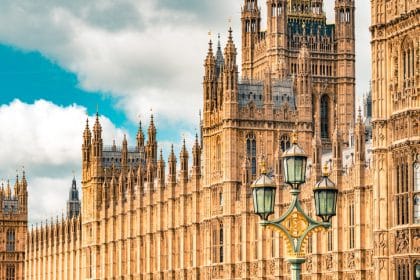Autumn Statement 2023
Fuelled by facts and figures such as more than halving inflation to 4.6% in October 2023 from its peak of over 11% last autumn, a faster-than-expected recovery in economic growth following the pandemic and a
Below is a summary of the key measures most likely to impact individuals and small businesses. Contrary to recent media reports, the Autumn Statement was completely silent on inheritance tax, the VAT threshold and the High Income Child Benefit Charge (HICBC).
National Insurance Cuts for the Self-Employed
The Class 4 National Insurance rate paid by the self-employed is being cut to 8% from 9%. This will take effect from 6 April 2024, saving up to £377 per year for self-employed individuals.
Additionally, the Class 2 rate of £3.45 per week is to be abolished from April 2024. Currently, payment of Class 2 National Insurance adds to a self-employed individual’s eligibility for contributory state benefits. From April 2024, self-employed individuals with profits of £6,725 or more will continue to receive National Insurance credits, despite no longer paying Class 2 National Insurance. Those with profits below £6,725 will continue to have the option to voluntarily pay Class 2 National Insurance at £3.45 per week to gain National Insurance credits. More details about the Class 2 reform will be released next year.
National Insurance Cuts for the Employed
The main Class 1 employee National Insurance rate is being cut to 10% from 12%, saving up to £754 per year for employees. Unusually, the measure will take effect from 6th January 2024 rather than from the new tax year. Employees will therefore start to see a larger net pay in their payslips from the beginning of 2024.
Business Rates
From April 2024, the small business multiplier will be frozen for a further year, and the 75% Retail, Hospitality and Leisure (RHL) relief will also be extended for a year. The standard rate multiplier applicable to larger businesses will be uprated in line with inflation.
Research & Development Tax Reliefs
The two existing research and development (R&D) schemes – RDEC and SME schemes- will be merged from April 2024 in order to simplify the system. However, the notional rate at which loss-making companies receive relief within the merged scheme will be reduced from 25% to 19%.
Full Expensing for Business Investment
In the Spring Budget earlier this year the government announced ‘full expensing’ for three years from 1 April 2023, allowing businesses to write off the full cost of qualifying plant and machinery investment. Today’s announcement now makes this permanent, though in practice, it affects larger businesses investing £1 million or more per year in plant and machinery.
Self Assessment for High Earners
Until the 2022-23 tax year, high earners with income of £100,000 or more have been required to submit annual self assessment tax returns, even if all their income is taxed via PAYE. It had already been announced that this threshold was to be increased to £150,000 from the current 2023-24 tax year and the Autumn Statement takes this a step further by abolishing the threshold altogether from 2024-25. Effectively, this means that those with PAYE income only should not have to file self assessments from 2024-25 onwards.
HMRC Debt Management
Investment will be made in HMRC’s debt management resource to allow HMRC to better target their debt collection activity, pursuing those with tax debts that can afford to pay and supporting those that are temporarily unable to pay. Further action will be taken against tax fraud, particularly in the construction industry. We particularly welcome the announcement of stronger action against promoters of tax avoidance. These measures are forecast to collect an additional £5 billion of tax revenue over the next five years.
Minimum Wages
The National Living Wage will increase to £11.44 from 1 April 2024 from its current rate of £10.42. At an almost 10% increase, this represents the biggest ever increase to the National Living Wage. Furthermore, while the National Living Wage currently applies to all employees aged 23 and over, it will apply to all those aged 21 and over from next April, representing an increase of over 12% for this age group. Small employers will need to plan for this significant increase in staff costs.
National Minimum Wage (NMW) rates will also increase as follows:
Age |
From 1 April 2024 |
Current Rate |
| 23 and over | £11.44 | £10.42 |
| 21-22 | £11.44 | £10.18 |
| 18-20 | £8.60 | £7.49 |
| Under 18 | £6.40 | £5.28 |
| Apprentice | £6.40 | £5.28 |
Increase in State Pension, Universal Credit and Other Benefits
All working age benefits including Universal Credit, will be uprated by the September 2023 inflation rate of 6.7% from April 2024. Maintaining the Triple Lock means that the state pension will also increase in line with average earnings growth of 8.5% from April 2024, amounting to £221.20 per week for those on the full state pension.




